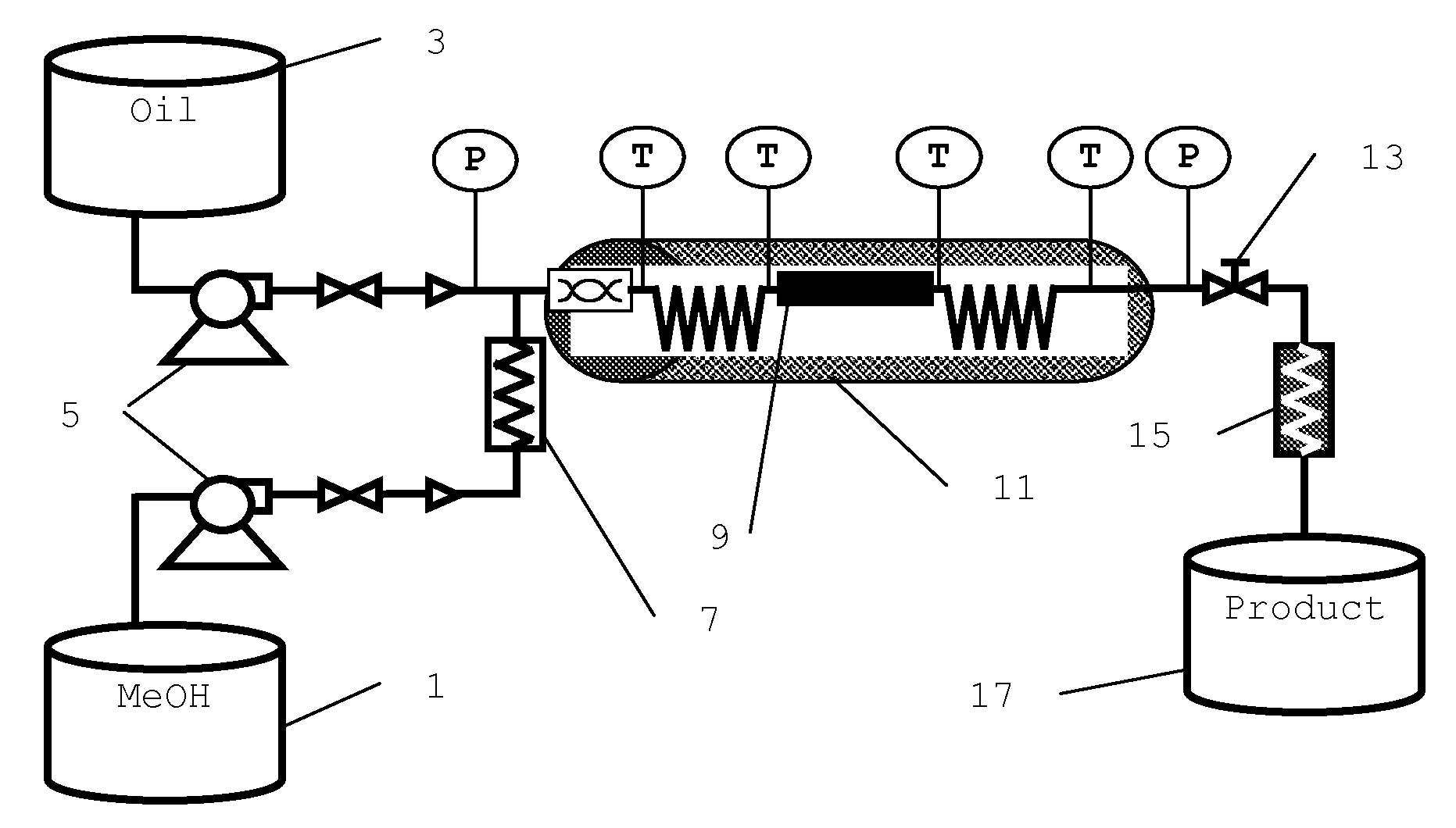Method for producing biodiesel using an immobilised catalyst
a technology of immobilised catalyst and biodiesel, which is applied in the direction of fatty oil/fats refining, fatty oil/acid recovery from waste, fatty oil/fats separation, etc. it can solve the problems of consuming catalyst, reducing catalytic efficiency, and requiring a relative long reaction time, so as to speed up the reaction time and enhance the reaction temperature
- Summary
- Abstract
- Description
- Claims
- Application Information
AI Technical Summary
Benefits of technology
Problems solved by technology
Method used
Image
Examples
invention example 1 (
I.1)
[0056]The fixed bed was filled with CaCO3. The empty volume of the reactor was 25 ml. The flow rates were adjusted to achieve a residence time of 10 minutes and a methanol-to-oil ratio of 0.6 g / g
invention example 2 (
I.2)
[0057]The fixed bed was filled with CaCO3. The empty volume of the reactor was 25 ml. The flow rates were adjusted to achieve a residence time of 5 minutes and a methanol-to-oil ratio of 0.6 g / g
invention example 3 (
I.3)
[0058]The fixed bed was filled with MgO. The total empty volume of the reactor was 25 ml. The flow rates were adjusted to achieve a residence time of 10 minutes and a methanol-to-oil ratio of 0.6 g / g
PUM
| Property | Measurement | Unit |
|---|---|---|
| pressure | aaaaa | aaaaa |
| pressure | aaaaa | aaaaa |
| pressure | aaaaa | aaaaa |
Abstract
Description
Claims
Application Information
 Login to View More
Login to View More - R&D
- Intellectual Property
- Life Sciences
- Materials
- Tech Scout
- Unparalleled Data Quality
- Higher Quality Content
- 60% Fewer Hallucinations
Browse by: Latest US Patents, China's latest patents, Technical Efficacy Thesaurus, Application Domain, Technology Topic, Popular Technical Reports.
© 2025 PatSnap. All rights reserved.Legal|Privacy policy|Modern Slavery Act Transparency Statement|Sitemap|About US| Contact US: help@patsnap.com



